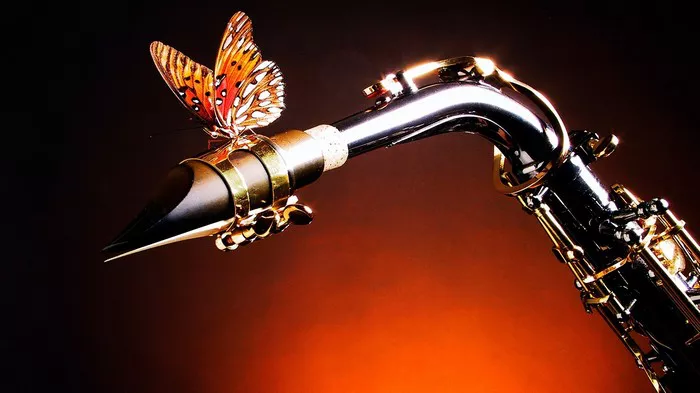The saxophone family is a diverse and fascinating group of instruments, each with its unique characteristics and capabilities. Among these, the E-flat alto saxophone holds a prominent position, celebrated for its versatility and popularity in various musical genres. In this article, we embark on a comprehensive exploration of the E-flat alto saxophone, uncovering its features, history, and significance in the world of music.
Understanding the Basics: The E-flat Alto Saxophone Defined
The E-flat alto saxophone is a member of the saxophone family, which also includes the sopranino, soprano, tenor, baritone, and bass saxophones. Named after the pitch produced when playing a written C, the E-flat alto saxophone is a mid-range instrument with a rich and expressive sound. It is commonly referred to as the alto saxophone, distinguishing it from other saxophones based on its pitch and size.
Size Matters: The Dimensions of the Alto Saxophone
The E-flat alto saxophone is smaller than the tenor and baritone saxophones but larger than the sopranino and soprano saxophones. Its size places it in the middle of the saxophone range, both in terms of pitch and physical dimensions. The alto saxophone is pitched in the key of E-flat, meaning that when a player reads a written C on the sheet music, the sound produced is an E-flat.
Versatility Across Genres: The Alto Saxophone’s Musical Range
One of the defining features of the E-flat alto saxophone is its exceptional versatility across various musical genres. From classical and jazz to pop and rock, the alto saxophone’s adaptability makes it a sought-after choice for musicians in diverse settings. Its ability to seamlessly blend with other instruments in an ensemble or take center stage in a solo performance contributes to its widespread use in both traditional and contemporary music.
Historical Roots: The Emergence of the Alto Saxophone
The saxophone family, including the alto saxophone, was invented by Adolphe Sax in the mid-19th century. Adolphe Sax, a Belgian instrument maker, sought to create an instrument that combined the power of brass instruments with the agility of woodwinds. The E-flat alto saxophone was among the original saxophones introduced by Sax, and its design has undergone refinements over the years to achieve its present form.
The alto saxophone gained popularity in the early 20th century, thanks to its prominent role in jazz music. Pioneering jazz saxophonists, such as Charlie Parker and Johnny Hodges, showcased the instrument’s expressive capabilities, contributing to its widespread adoption in the jazz world. Since then, the alto saxophone has become a staple in various musical genres, solidifying its place as a versatile and indispensable member of the saxophone family.
Key Features: Exploring the Anatomy of the Alto Saxophone
The E-flat alto saxophone consists of several key components that contribute to its distinctive sound and playability. The instrument comprises a curved neck, a body with tone holes, a bell, and a set of keys and mechanisms. The use of brass in its construction provides a warm and resonant tone, while the keys, made of materials like brass and nickel, facilitate precise control over pitch and articulation.
The alto saxophone is typically pitched in the key of E-flat, and its range spans from a concert D3 to a concert A5. The instrument’s fingering system, characterized by a single octave key and a variety of key combinations, allows players to navigate its wide range with ease. The inclusion of a curved neck distinguishes the alto saxophone from its straight-necked counterpart, the soprano saxophone, contributing to its distinctive appearance and sound.
Learning the Alto Saxophone: A Rewarding Journey
For aspiring musicians, learning to play the E-flat alto saxophone can be a rewarding and enjoyable journey. Its relatively compact size makes it more manageable for beginners, and its versatile nature provides ample opportunities for musical exploration. Beginners often find that the alto saxophone strikes a balance between the soprano and tenor saxophones, making it an ideal starting point for those new to the instrument.
Educational programs, both in schools and private music studios, frequently include the alto saxophone in their curriculum. Learning the fundamentals of embouchure, finger placement, and breath control opens the door to a world of musical possibilities. As students progress, they can explore different musical genres, develop their improvisational skills, and participate in ensembles, showcasing the instrument’s adaptability and versatility.
The Alto Saxophone in Contemporary Music: An Enduring Presence
In contemporary music, the E-flat alto saxophone continues to play a significant role. Its expressive capabilities make it a favored instrument in popular music genres, including rock, funk, and R&B. Iconic saxophone solos in songs by artists like Bruce Springsteen, Pink Floyd, and Gerry Rafferty demonstrate the instrument’s enduring presence in the contemporary music landscape.
In addition to its role in popular music, the alto saxophone remains a vital component of concert bands, jazz ensembles, and classical orchestras. Its ability to blend seamlessly with other instruments or stand out as a solo voice makes it a versatile choice for musicians seeking a wide range of musical experiences.
See Also: Demystifying the Saxophone: Why is it in a Different Key?
Conclusion: The E-flat Alto Saxophone – A Musical Gem
In conclusion, the E-flat alto saxophone stands as a musical gem with a rich history, versatile capabilities, and enduring popularity. Whether played by beginners embarking on a musical journey or seasoned musicians captivating audiences with expressive solos, the alto saxophone’s allure is undeniable. Its unique blend of size, pitch, and tonal characteristics makes it a beloved member of the saxophone family, contributing to its continued prominence in a myriad of musical settings. As musicians continue to explore the limitless possibilities of the E-flat alto saxophone, its timeless appeal ensures its place as a cherished instrument in the world of music.


